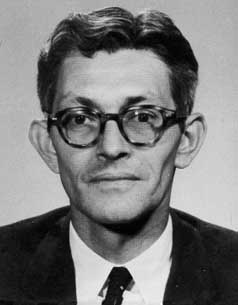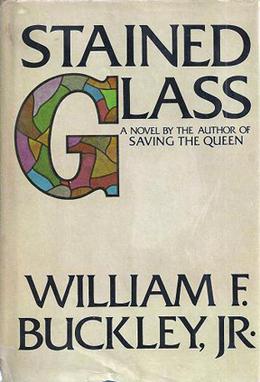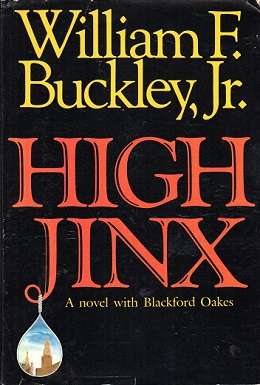Spy fiction is a genre of literature involving espionage as an important context or plot device. It emerged in the early twentieth century, inspired by rivalries and intrigues between the major powers, and the establishment of modern intelligence agencies. It was given new impetus by the development of fascism and communism in the lead-up to World War II, continued to develop during the Cold War, and received a fresh impetus from the emergence of rogue states, international criminal organizations, global terrorist networks, maritime piracy and technological sabotage and espionage as potent threats to Western societies. As a genre, spy fiction is thematically related to the novel of adventure, the thriller and the politico-military thriller.

Allen Welsh Dulles was an American lawyer who was the first civilian Director of Central Intelligence (DCI), and its longest serving director to date. As head of the Central Intelligence Agency (CIA) during the early Cold War, he oversaw the 1953 Iranian coup d'état, the 1954 Guatemalan coup d'état, the Lockheed U-2 aircraft program, the Project MKUltra mind control program, and the Bay of Pigs Invasion in 1961. As a result of the failed invasion of Cuba, Dulles was fired by President John F. Kennedy.

Everette Howard Hunt Jr. was an American intelligence officer and author. From 1949 to 1970, Hunt served as an officer in the Central Intelligence Agency (CIA), where he was a central figure in U.S. regime change in Latin America including the 1954 Guatemalan coup d'état and the 1961 Bay of Pigs Invasion in Cuba. Along with G. Gordon Liddy, Frank Sturgis, and others, Hunt was one of the Nixon administration's so-called White House Plumbers, a team of operatives charged with identifying government leaks to outside parties.

James Jesus Angleton was an American intelligence operative who served as chief of the counterintelligence department of the Central Intelligence Agency from 1954 to 1975. According to Director of Central Intelligence Richard Helms, Angleton was "recognized as the dominant counterintelligence figure in the non-communist world".

The Cuban Project, also known as Operation Mongoose, was an extensive campaign of terrorist attacks against civilians, and covert operations, carried out by the U.S. Central Intelligence Agency in Cuba. It was officially authorized on November 30, 1961, by U.S. President John F. Kennedy. The name "Operation Mongoose" was agreed to at a White House meeting on November 4, 1961.

Richard Mervin Bissell Jr. was an American Central Intelligence Agency officer responsible for major projects such as the U-2 spy plane and the Bay of Pigs Invasion. He is seen as one of the most important spymasters in CIA history.

The Central Intelligence Agency (CIA), known informally as the Agency, metonymously as Langley and historically as the Company, is a civilian foreign intelligence service of the federal government of the United States tasked with gathering, processing, and analyzing national security information from around the world, primarily through the use of human intelligence (HUMINT) and conducting covert action through its Directorate of Operations. The agency is headquartered in the George Bush Center for Intelligence in Langley, Virginia.

Saving the Queen is a 1976 American spy thriller novel by William F. Buckley, Jr., the first of eleven novels in the Blackford Oakes series.

Stained Glass is an American spy thriller novel by William F. Buckley, Jr., the second of eleven novels in the Blackford Oakes series. Its first paperback edition won a 1980 National Book Award in the one-year category Mystery (paperback).
William King "Bill" Harvey was an American Central Intelligence Agency (CIA) officer, best known for his role in the terrorism and sabotage campaign known as Operation Mongoose. He was known as "America's James Bond", a tag given to him by Edward Lansdale.

The following is a list of written works by William F. Buckley Jr.

Who's on First is a 1980 American spy thriller novel written by William F. Buckley Jr., the third of eleven novels in the Blackford Oakes series.

Marco Polo, if You Can is a 1982 Blackford Oakes novel by William F. Buckley, Jr. It is the fourth of 11 novels in the series.

The Story of Henri Tod is a 1984 Blackford Oakes novel by William F. Buckley, Jr. It is the fifth of 11 novels in the series.

See You Later, Alligator is a 1985 Blackford Oakes novel by William F. Buckley, Jr. It is the sixth of 11 novels in the series.

High Jinx is a 1986 Blackford Oakes novel by William F. Buckley, Jr. It is the seventh of 11 novels in the series by date of publication, but occurs third chronologically.

Mongoose R.I.P. is a 1988 Blackford Oakes novel by William F. Buckley, Jr. It is the eighth of 11 novels in the series.

Tucker's Last Stand is a 1990 Blackford Oakes novel by William F. Buckley, Jr. It is the ninth of 11 novels in the series.

A Very Private Plot is a 1994 historical spy novel by William F. Buckley, Jr. It is the tenth of 11 novels in the Blackford Oakes series. The novel was well received by The New York Times described the novel a full of "grave whimsy with which Mr. Buckley retraces old conflicts" and "deliver[ing] more than mere routine spy thrills."

Last Call for Blackford Oakes is a 2005 Blackford Oakes novel by William F. Buckley, Jr.
















